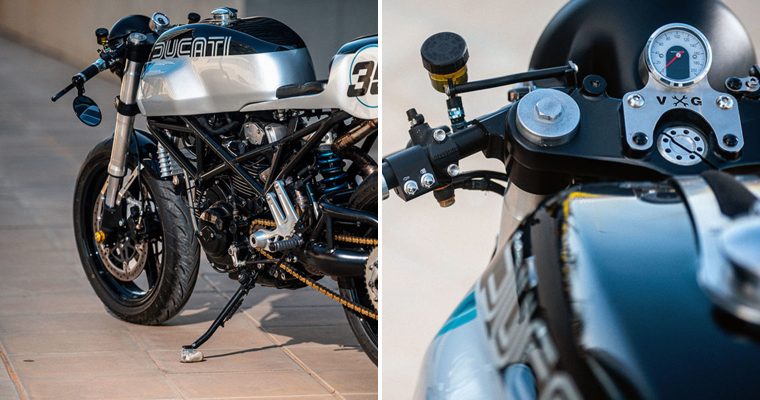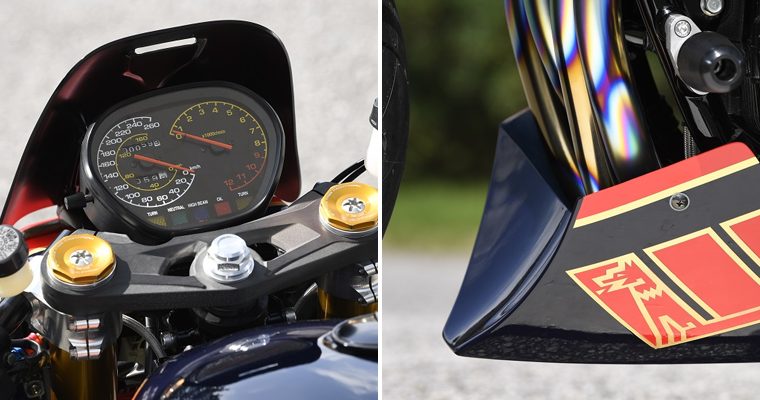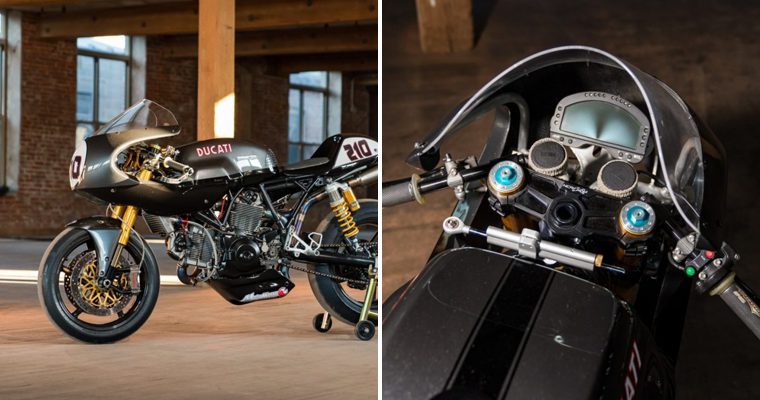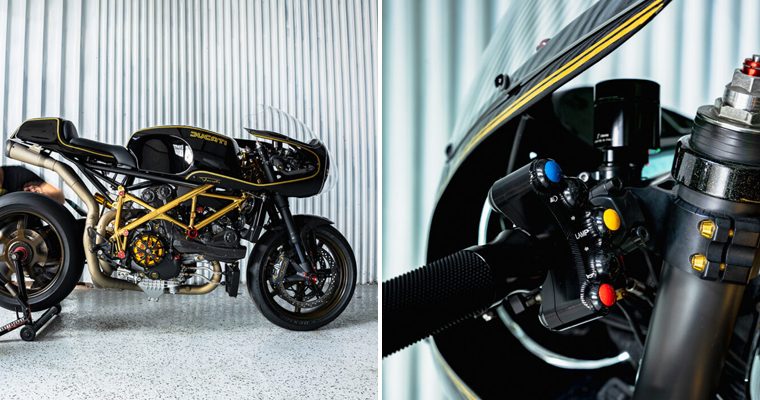Pre-war England sported a thriving motorcycle industry. But while majority of bikes on the road were utilitarian single cylinder ride-to-work machines for those who had money, the best, and most expensive, was the Brough Superior SS100.
Some things never change and today the Brough Superior SS100 stands at the pinnacle of collectability and is still one of the most expensive motorcycles available.
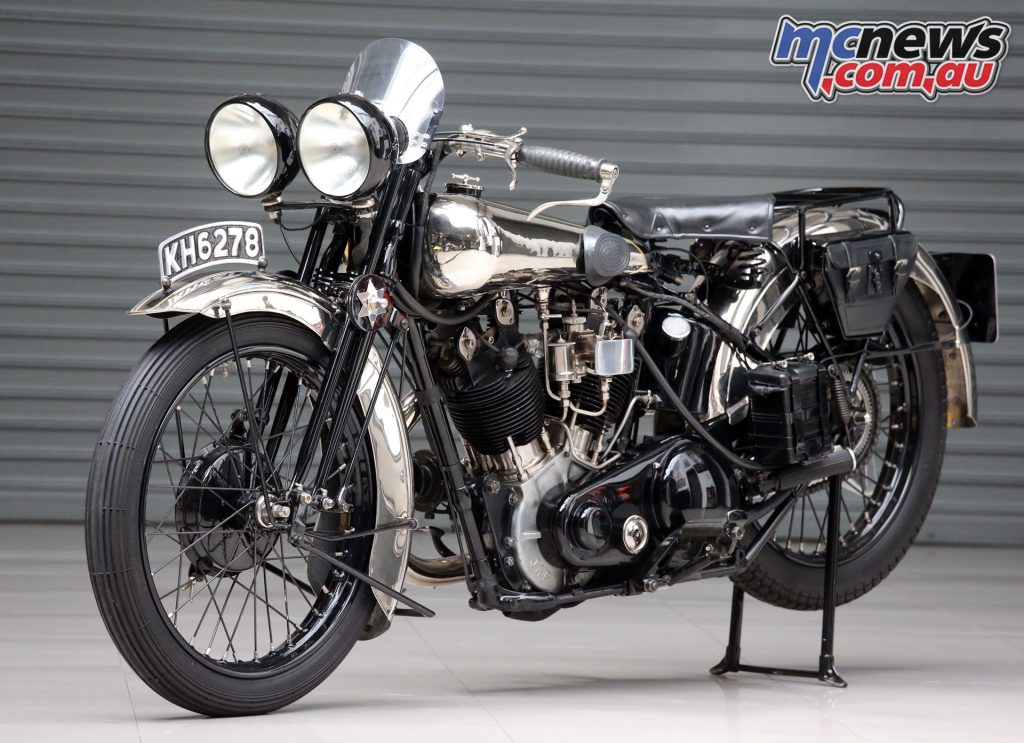 The Brough Superior SS100 featured an imposing stance with twin headlights
The Brough Superior SS100 featured an imposing stance with twin headlights
George Brough was originally involved in a partnership with his father William producing the Brough motorcycle. After World War 1 George wanted to build a luxury motorcycle for gentlemen and William didn’t, so in 1919 the 29-year old George decided to go it alone.
During the 1920s, out of small premises in Haydn Road, Nottingham in the North of England, George Brough, set out to build the ultimate luxury motorcycle to, “cater for the connoisseur rider who will have the best and fastest machine on the road.”
Unlike the flat-twin of William’s Brough, George decided on a V-twin and immediately termed his the Brough Superior, or “The Rolls-Royce of Motorcycles”. From all accounts William was less than impressed with the title, commenting that presumably this made his motorcycle the “Brough Inferior”.
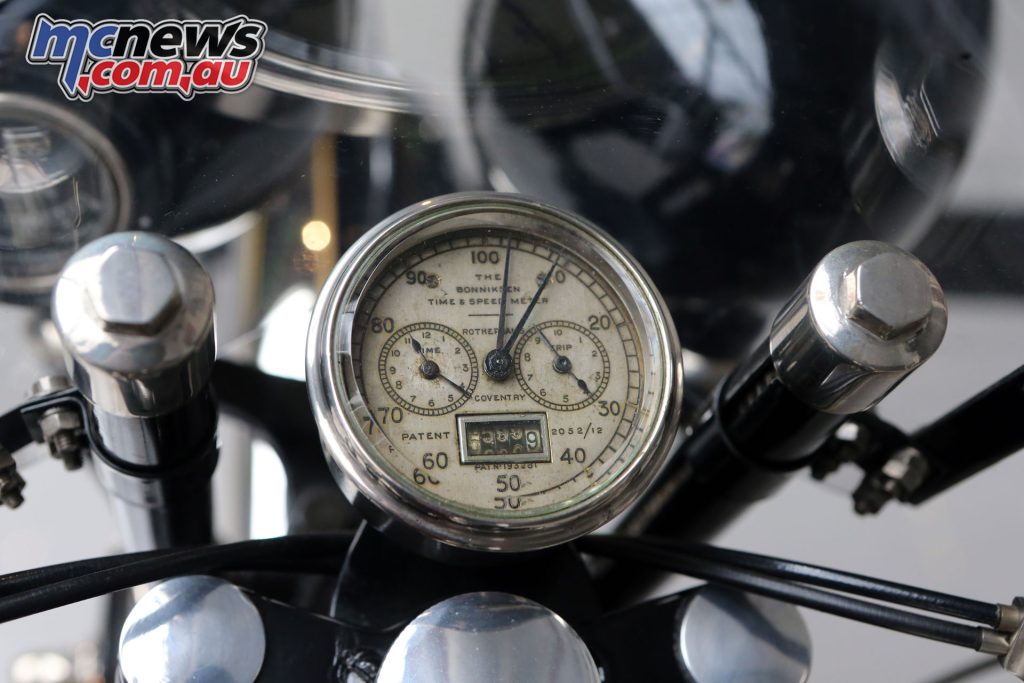 Bonniksen clock and speedometer
Bonniksen clock and speedometer
George also wanted his machines to be suitable for sidecar attachment and at that time the only competition for big twin motorcycles came from the American manufacturers. Priding himself on the finish of his motorcycles, nickel plating was evident throughout, even on the fuel tank.
At a time when motorcycles featured rectangular fuel tanks under the top frame tube all Broughs had a distinctive rounded saddle-style fuel tank. Unlike other motorcycles of the period the Brough Superior came fitted with number plates, horn, acetylene lamps and generator.
Brough Superior frames and some cycle parts were made in house, while the engines, magnetos and carburettors were sourced from outside suppliers. The advantage of this scheme was Brough was insulated from excessive tooling and design costs, but the downside was the company was dependent on the quality and supply from outside concerns.
The first Brough was the SS80, powered by a 1000 cc side-valve V-twin specially manufactured by J.A. Prestwich (or J.A.P.) and in 1924 the engine was redesigned to include overhead valves. The new 50-degree V-twin overhead valve design had two camshafts, each with two cams and enclosed rockers running on ball bearings. The two valves were opposed at 90-degrees and lubrication was by a constant loss mechanical oil pump.
RelatedPosts  BMW R 69 S – One of BMW’s most sought after Boxers March 16, 2023
BMW R 69 S – One of BMW’s most sought after Boxers March 16, 2023  Bimota V-Due – The bike that bankrupted Bimota… February 3, 2023
Bimota V-Due – The bike that bankrupted Bimota… February 3, 2023 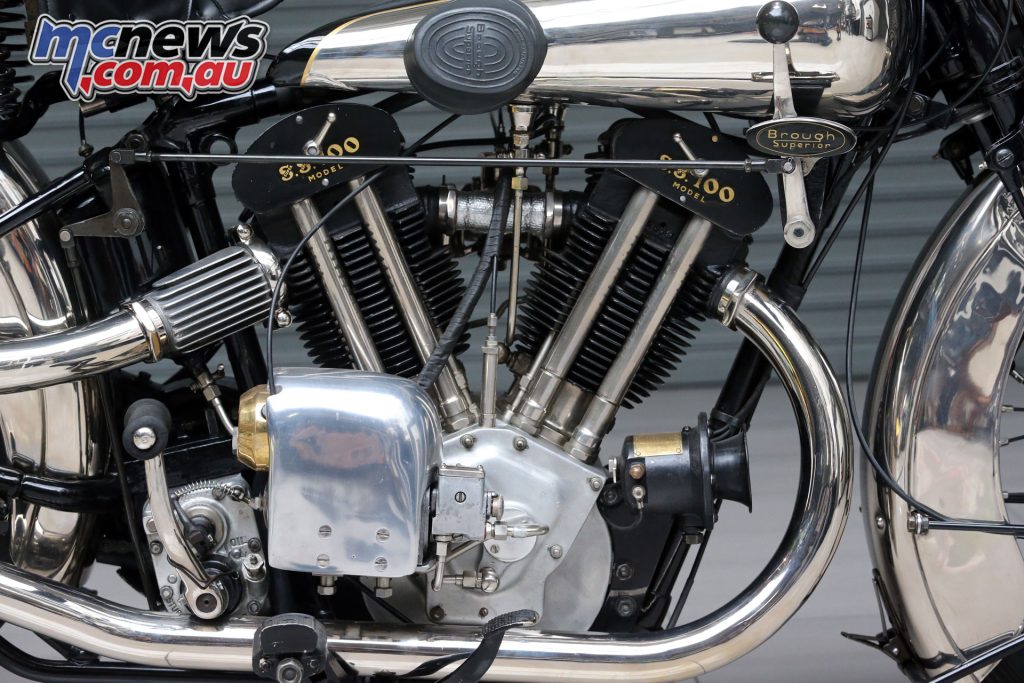 A JAP 1000 cc V-twin was used for better reliability
A JAP 1000 cc V-twin was used for better reliability
Brough housed the new J.A.P. engine in a double cradle frame developed from Bert le Vack’s record-braking machine that had achieved 182 km/h at Brooklands in 1924. Sturney-Archer provided a stronger three-speed handshift gearbox and the SS100 debuted at the 1924 Olympia Show, each coming with a guarantee that it had been timed at over 100 mph (161 km/h).
George Brough was also more than a company director. With his personal 1000 cc SS80 racer “Old Bill”, George won over fifty speed trials and hill climbs during 1922 and 1923. In 1923 the front tyre exploded and the bike crossed the finish line on its own at 140 km/h, with George sliding by after.
In 1925 Brough and engineer friend Harold Karslake patented the Castle front fork, these more like those used on Harley-Davidsons than the Brampton type that distinguished other British motorcycles. Later in the year the SS100 evolved into an even sportier version, the Alpine Grand Sports.
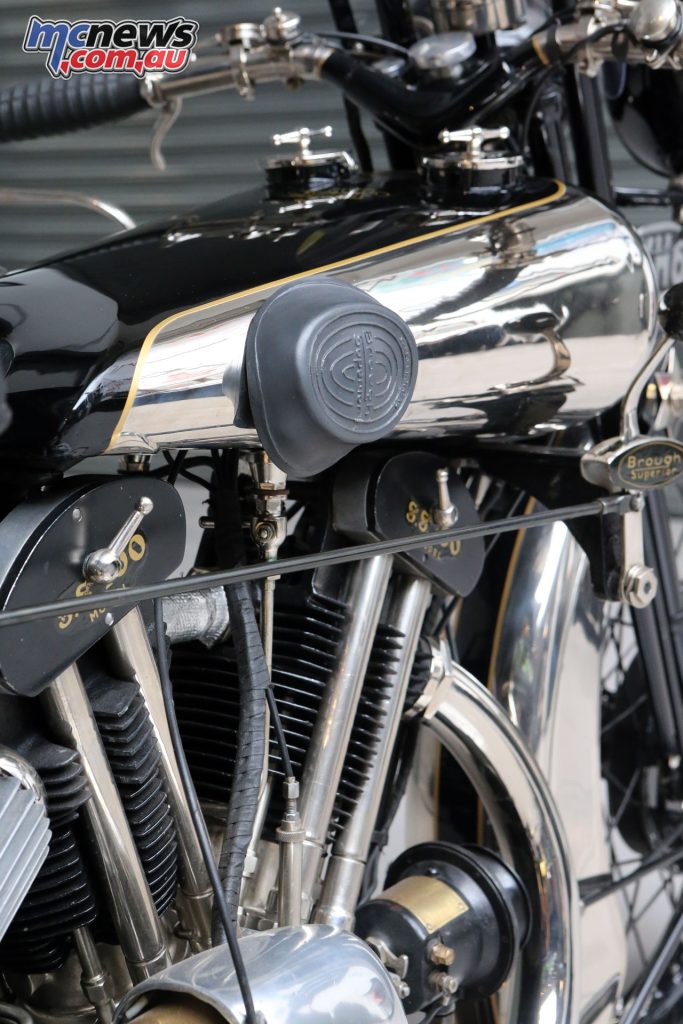 The chrome fuel tank was a Brough trademark
The chrome fuel tank was a Brough trademark
The 995 cc engine was now longer stroke (80 x 99 mm) with a roller bearing lower end and Brough and F.P. Dickson entered two in the Alpine Trial, both winning trophies. Eventually the Alpine Grand Sports evolved into the Pendine, named after the Welsh racetrack and guaranteed to exceed 110 mph (177 km/h).
In 1928 (as on the example here) an optional frame featuring a triangulated rear section and under seat springing was offered on the Alpine Grand Sports. The Achilles heel of all Broughs were the pressed steel single leading shoe brakes, simply because George was more interested in going fast than stopping.
During the 1930s the SS100 gained a foot gearshift, and in November 1933 it received a new twin carburettor dual magneto J.A.P. engine and a four-speed transmission. But eventually George Brough grew tired of dealing with J.A.P. quality control issues and switched the SS100 to an overhead valve Matchless 50-degree V-twin.
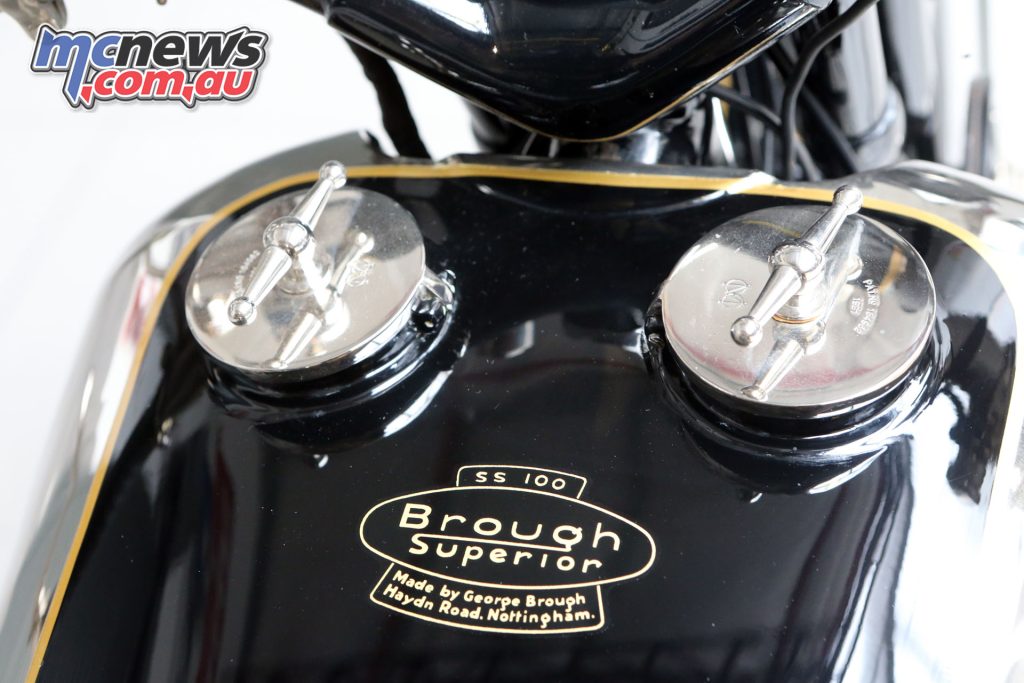 Twin fuel filler caps
Twin fuel filler caps
The Matchless engine was not as powerful as the J.A.P., but more refined and the SS100 remained in production as the spearhead of the range until motorcycle production ceased in 1940. Other Broughs emphasised quietness and comfort but the SS100 was always unashamedly performance oriented, and because of this the J.A.P. powered versions considered the more desirable.
Brough Superiors were also highly successful speed record machines and in 1937 Eric Fernihough achieved 273 km/h on an SS100. Noel Pope still holds the lap record for solo and sidecar motorcycles at Brooklands at 200 km/h and 170 km/h respectively.
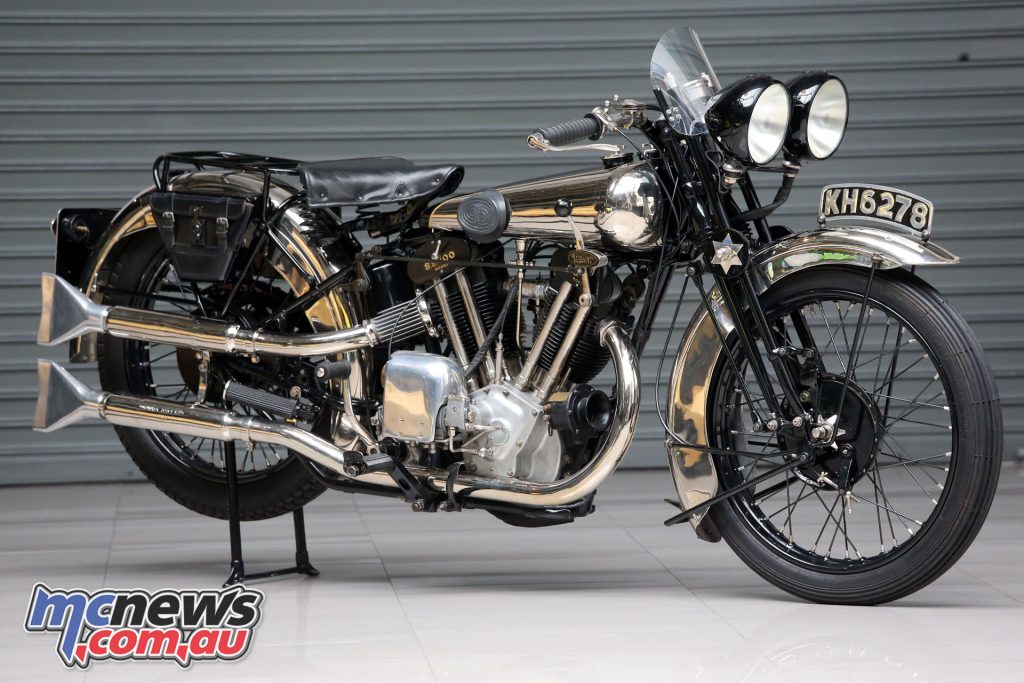 The SS100 is one of the most desirable motorcycles in existence
The SS100 is one of the most desirable motorcycles in existence
Why is the Brough Superior so revered? In these days of mass production it is difficult to envisage how Brough Superior survived. Between 1920 and 1940 only about 3,000 Brough Superiors were built, with a handful of SS100s, and the company was virtually a one-man concern.
Every aspect of the Brough Superior placed it beyond the reach of the average motorcyclist. George Brough was happy to build just one high quality motorcycle in preference to ten cheaper machines and his obsession with quality and performance has ensured his motorcycles are still amongst the most coveted of all.
Always built to the highest standard, they represent a bygone era; one where quality came first and profits second. There is also the celebrity factor. The most famous Brough Superiors were those of Colonel T E Lawrence, “Lawrence of Arabia”. Lawrence was a personal friend of George Brough and an avid motorcyclist.
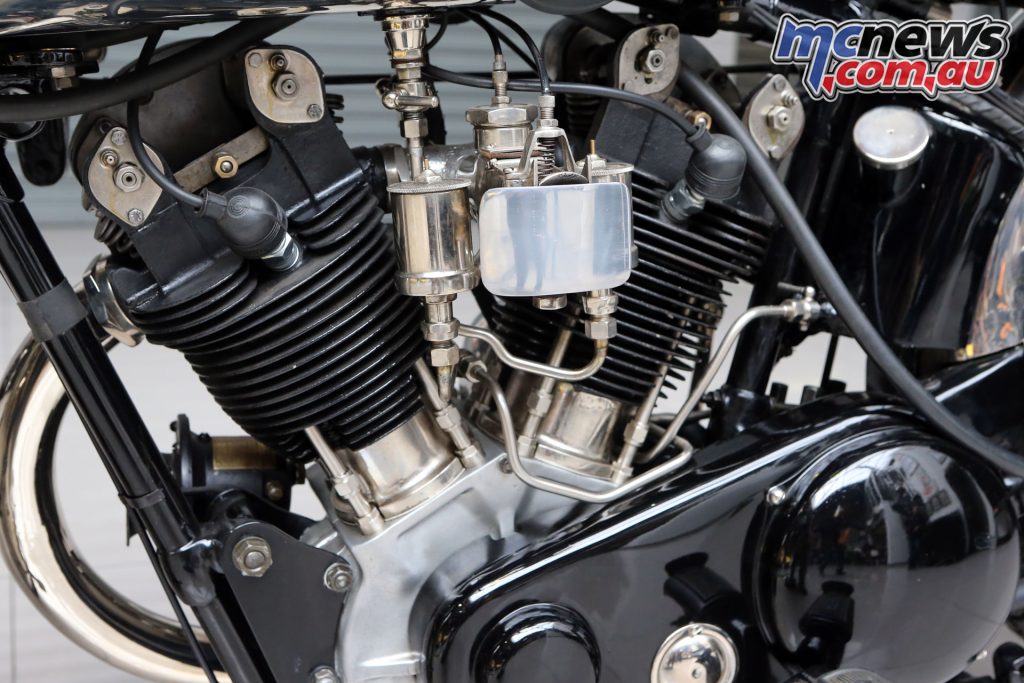 Superb attention to detail was a Brough Superior trademark
Superb attention to detail was a Brough Superior trademark
He rode Broughs for more than thirteen years, often calling in at the Nottingham works to discuss modifications and specifications. It was on an SS100 that Lawrence died in May 1935 when he swerved to avoid two boys on cycles on a country road in Dorset near his cottage in Clouds Hill.


